P. A. Castillo
A new approach for solving global optimization and engineering problems based on modified Sea Horse Optimizer
Feb 21, 2024



Abstract:Sea Horse Optimizer (SHO) is a noteworthy metaheuristic algorithm that emulates various intelligent behaviors exhibited by sea horses, encompassing feeding patterns, male reproductive strategies, and intricate movement patterns. To mimic the nuanced locomotion of sea horses, SHO integrates the logarithmic helical equation and Levy flight, effectively incorporating both random movements with substantial step sizes and refined local exploitation. Additionally, the utilization of Brownian motion facilitates a more comprehensive exploration of the search space. This study introduces a robust and high-performance variant of the SHO algorithm named mSHO. The enhancement primarily focuses on bolstering SHO's exploitation capabilities by replacing its original method with an innovative local search strategy encompassing three distinct steps: a neighborhood-based local search, a global non-neighbor-based search, and a method involving circumnavigation of the existing search region. These techniques improve mSHO algorithm's search capabilities, allowing it to navigate the search space and converge toward optimal solutions efficiently. The comprehensive results distinctly establish the supremacy and efficiency of the mSHO method as an exemplary tool for tackling an array of optimization quandaries. The results show that the proposed mSHO algorithm has a total rank of 1 for CEC'2020 test functions. In contrast, the mSHO achieved the best value for the engineering problems, recording a value of 0.012665, 2993.634, 0.01266, 1.724967, 263.8915, 0.032255, 58507.14, 1.339956, and 0.23524 for the pressure vessel design, speed reducer design, tension/compression spring, welded beam design, three-bar truss engineering design, industrial refrigeration system, multi-Product batch plant, cantilever beam problem, multiple disc clutch brake problems, respectively.
SOAP vs REST: Comparing a master-slave GA implementation
May 25, 2011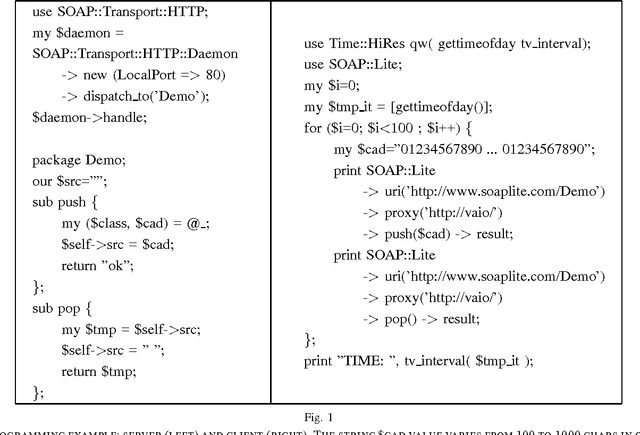
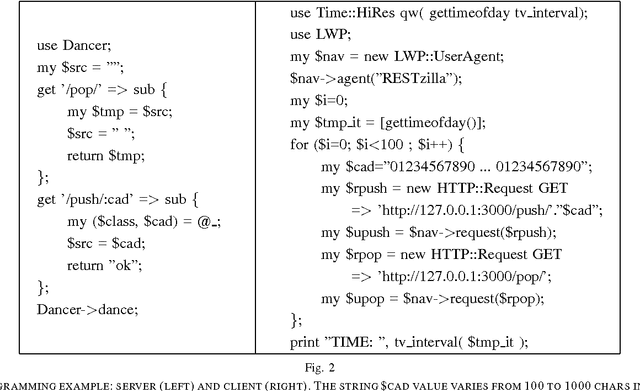
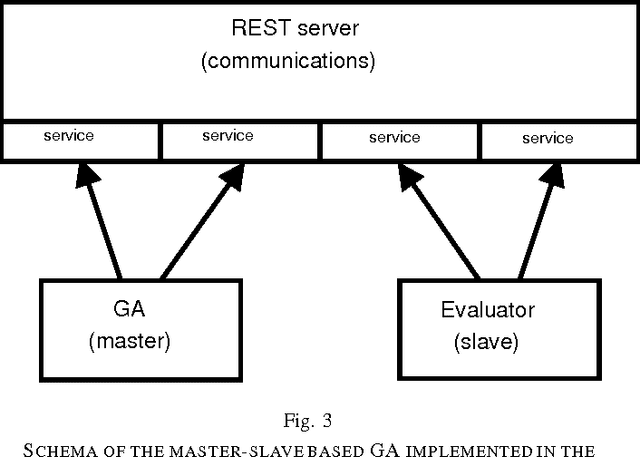
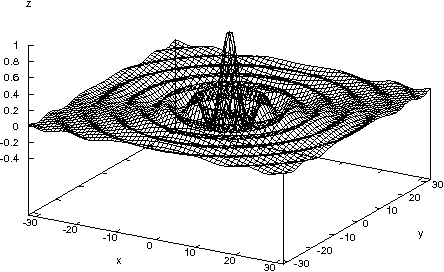
Abstract:In this paper, a high-level comparison of both SOAP (Simple Object Access Protocol) and REST (Representational State Transfer) is made. These are the two main approaches for interfacing to the web with web services. Both approaches are different and present some advantages and disadvantages for interfacing to web services: SOAP is conceptually more difficult (has a steeper learning curve) and more "heavy-weight" than REST, although it lacks of standards support for security. In order to test their eficiency (in time), two experiments have been performed using both technologies: a client-server model implementation and a master-slave based genetic algorithm (GA). The results obtained show clear differences in time between SOAP and REST implementations. Although both techniques are suitable for developing parallel systems, SOAP is heavier than REST, mainly due to the verbosity of SOAP communications (XML increases the time taken to parse the messages).
Distributed Evolutionary Computation using REST
May 25, 2011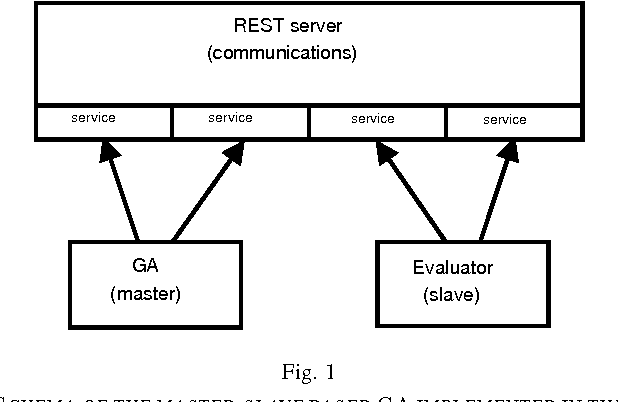
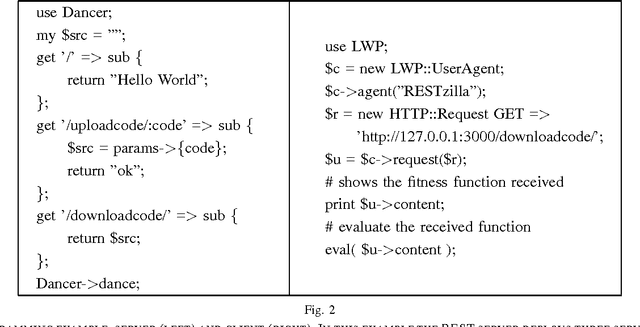
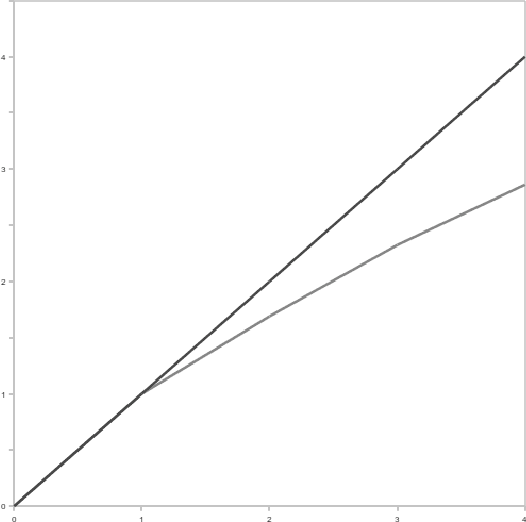
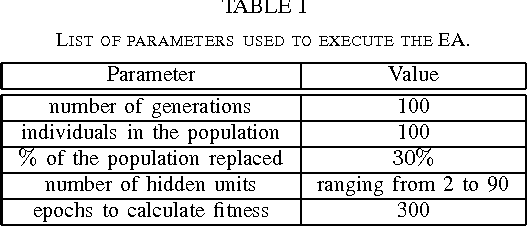
Abstract:This paper analises distributed evolutionary computation based on the Representational State Transfer (REST) protocol, which overlays a farming model on evolutionary computation. An approach to evolutionary distributed optimisation of multilayer perceptrons (MLP) using REST and language Perl has been done. In these experiments, a master-slave based evolutionary algorithm (EA) has been implemented, where slave processes evaluate the costly fitness function (training a MLP to solve a classification problem). Obtained results show that the parallel version of the developed programs obtains similar or better results using much less time than the sequential version, obtaining a good speedup.
Lamarckian Evolution and the Baldwin Effect in Evolutionary Neural Networks
Mar 01, 2006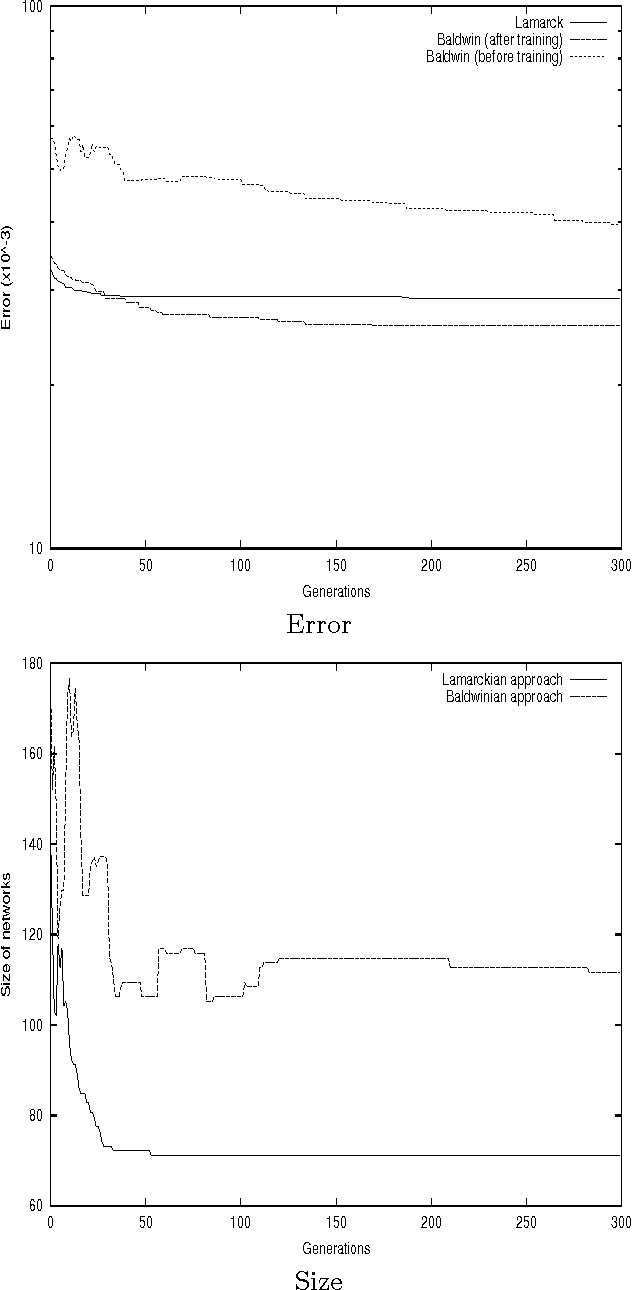
Abstract:Hybrid neuro-evolutionary algorithms may be inspired on Darwinian or Lamarckian evolu- tion. In the case of Darwinian evolution, the Baldwin effect, that is, the progressive incorporation of learned characteristics to the genotypes, can be observed and leveraged to improve the search. The purpose of this paper is to carry out an exper- imental study into how learning can improve G-Prop genetic search. Two ways of combining learning and genetic search are explored: one exploits the Baldwin effect, while the other uses a Lamarckian strategy. Our experiments show that using a Lamarckian op- erator makes the algorithm find networks with a low error rate, and the smallest size, while using the Bald- win effect obtains MLPs with the smallest error rate, and a larger size, taking longer to reach a solution. Both approaches obtain a lower average error than other BP-based algorithms like RPROP, other evolu- tionary methods and fuzzy logic based methods
 Add to Chrome
Add to Chrome Add to Firefox
Add to Firefox Add to Edge
Add to Edge